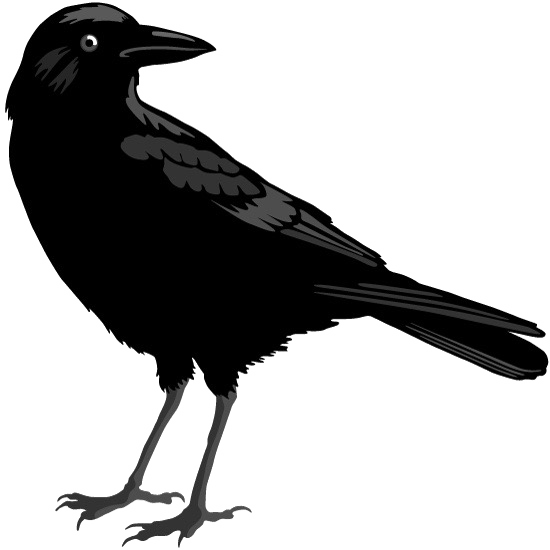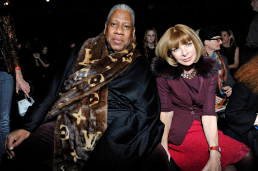Business
Marketing Lessons From The Fashion Industry
Marketing Lessons From The Fashion Industry
To me, the greatest marketers are fashion icons. And by fashion icons I don’t mean supermodels or the best dressed celebrities. I mean the ordinary individuals who put in captivating work that suddenly makes them seem extraordinary. Some of my top fashion icons are André Leon Talley, former editor-at-large of Vogue magazine; Dapper Dan, the underground creative genius that bootlegged luxury fashion to pimps and gangstas; Diana Vreeland, who worked as a columnist and editor of Harper’s Bazaar and later served as the editor-in-chief of Vogue magazine, and finally Anna Wintour, the private and mysterious British Journalist who has served as editor-in-Chief of Vogue since 1988, and Global Chief Content Officer for Condé Nast since 2020.
I study the work and follow the moves of these four individuals because I believe their subject matter knowledge is endless, obsessive passion is contagious, thinking is insanely divergent, product appreciation is deep, and the rebellious attitude to getting their work done is alluring to me. These five variables are the essential ingredients that are consistent across each individual’s profile, and I believe makes them extra-ordinary. Fashion or not, they are extremely savvy marketers of concepts and products who I believe can sell anything as long as they are interested in it or care about it enough. It’s like what Jay-Z said in ‘Dirt Off Your Shoulder’ – “I’m the realest that run it, I just happen to rap”.
So, these are incredible humans, but why are they great marketers? First factor we will explore is Vanity. As you know, the fashion world has been criticised for being unreal and vain. People in the industry supposedly act as if fashion is the true religion (pun intended), and nothing else exists – and I wonder why that is so wrong. If you don’t believe so much in the work that you do, how do you expect to make someone else believe in it? If Steve Jobs did not have a blinding belief in interface and experience design, would he have been able to convince others to become advocates enough to make Apple attain the status of the world’s most valuable company? I think not.
Anna Wintour is considered the most powerful woman in the global fashion industry, and I’m not even sure she’s ever sewed a stitch of fabric. Fashion designers treat her like the Queen of England and consumers are constantly trying to demystify her. But what makes Anna so powerful, is not only the mystery that lurks behind her dark shades and wicked bobs, it is that she captains Condé Nast – the ultimate lifestyle brand conglomerate, and a melting pot of vanity – which is a guaranteed marketing machine that sells out anything and anyone.
Next factor to look at will be Personality. Everyone that was or is a leading voice in the fashion industry, is an absolute original. From physical appearances to personal idiosyncrasies, the four aforementioned people are very authentic and unapologetic about how they carry themselves and how they are perceived. This comes across authentically in their personal branding which makes them absolute magnets to their various tribes. It makes connecting with their audiences easier, and it makes persuasion and conversion easier. While reading Dapper Dan’s memoir aptly titled ‘Made in Harlem’ – I noted an interesting story he told about touring Africa and ending up in Senegal, where the bulk of his money was spent buying beautiful fabrics which tailors made into nice suits for him. This almost got him stranded in Africa by the way. Dap likes to look fly, and one thing that is consistent about him and all the other fashion icons I follow, is the compulsive need to cultivate and appreciate style.
Another important factor is Showmanship. If you skim through fashion history; study roll-out plans, exhibitions, and sustaining conversations to drive sales and talkability, you’d note that fashion is highly histrionic. Fashion designers and some fashion editors are the greatest showmen. They know how to put on a show or magazine that makes everyone stop, point and talk. To me, Diana Vreeland still remains the only fashion editor who understood the charm of the human pose, the soul of an outfit, the personality of a typeface, and the architecture of a brilliant layout. She was the master of detail and exaggeration – and she embodied these two elements completely. Checkout her documentary ‘Diana Vreeland: The Eye Has to Travel’ whenever you can.
The final factor that makes fashion icons marketing geniuses is Sustenance. They understand the art of sustaining conversations long after exhibitions are over. The phrase ‘paint a picture with words’ was probably originally used to describe André Leon Talley. His deep love for style, taste and character, merged with his vast knowledge of the fashion industry helped him connect with fashion designers on a purely artistic level. This enabled him to tell the stories of their personality and collections long after the last model had left the runway.
Nostalgia Is One Hell Of A Drug
Nostalgia Is One Hell Of A Drug
Cambridge English Dictionary defines nostalgia as “a feeling of pleasure and sometimes slight sadness at the same time as you think about things that happened in the past”. I define nostalgia as a sensation or perception as it relates to culturally shared moments across age groups, ethnicities, race, profession and academic school of thought. Nostalgia as an element of social consciousness, is polarizing by nature. This means that two cultural groups will not remember the same event the same way, either one group has positive emotions, and the other group has negative emotions, or both groups hold varying degrees of positive and negative emotions.
Kareem “Biggs” Burke, an esteemed pop-culture philosopher once said “sometimes I miss the vibe, but then I remember the disrespect”, I hope I quoted that correctly. What this statement literally does is to further illustrate the polarizing nature of nostalgia even within the group or the individual. Think about it, have you ever reminisced about an old horror movie that you saw as a kid with your family, and in the same breath remembered the crippling fear you felt when the night came and the lights went out? Or a uni lover who did you dirty but in spite of that holds a warm place in your heart even though you still get PTSD from the heartbreak? – why would an experience that ended badly, continue to feel so good?
Well, we have our brains to thank for that. By design, the brain functions to elevate parts of the memory which are pleasurable, and represses the parts which are unpleasant. It is a complicated process of human evolution that has served the human race from time. Does this mean that our brain is broken? No, all it does is what it has been designed to do – plug, play, optimize. Part of optimization is memory decay, our conscious and subconscious memories are filed away in the unconscious – this is the deepest and darkest parts of our minds. Memories that get filed away in the unconscious cannot be actively recalled no matter how hard you try, what helps are retrieval cues, or in more extreme cases, hypnosis.
Retrieval cues are basically elements in the environment that triggers recall. Retrieval cues can be present in the external environment, such as sound, smell, touch, taste, and sights. Retrieval cues can also be internal to the person retrieving the memory, such as physical states or feelings. Retrieval cues are why Usher has a hit song titled “You Remind Me” – retrieval cues are why a familiar perfume scent can either make you smile ear to ear, or tear up a little in memory of the one that got away. Retrieval cues are so powerful, and it is why the design universe has informally decided to adopt certain colors as symbolic representation of actions. The red light means stop and so does your delete button, even if you’ve not read the words on the button, you automatically recognise what it could 90% mean.
Retrieval cues are all around us, it’s in the music we listen to, the movies we watch, the billboards we see, the magazines we read, the market we patronize, the documentaries we learn from, the digital ads that bombard us, and the people we are drawn to interact with. These different social elements tap into a moment in the time of our lives that will form the relatability needed to buy into their agenda. Advertisers, movie/music directors, interaction designers, salesmen, PR consultants, image architects etc, are intentionally or unintentionally adept at using retrieval cues to sell a story through visuals and words, that will trigger the action needed to make a sale or change perception for good.
Polarizing in nature as it is, the powerful allure of nostalgia has clearly proven to be leaning favorably towards pleasant memories. For communicators, this means that in developing strategies, tactics, and eventual comms tool kits, it is important that you stay within cultural familiarity – do your research into the words, images, and storylines that helps your audience form stronger cultural associations with your products. For designers, who I refer to as the magicians who speak the language of the unconscious memory, the task is to use shapes, colors, layouts and typefaces as visual collaterals that introduces the brand personality and strengthens its positioning as a trusted friend and cultural ally.
As internet penetration spreads across the planet, more people are adopting the use of smart mobile phones, and the world continues in its move into digital-first platforms of interactions. This means that there will be an influx of culturally diverse pockets of people, and there’s a need for robust integrated communication strategies that incorporates and projects an authentic cultural salad bowl that not only taps into the culture, but represents moments in the culture. In designing products for finance, entertainment, health, wellbeing and sports, ask yourself – beyond the technicalities and business strategies, what’s the one thing the user will remember about my product? How do I immortalise the concept?
Human Beings Are Products Too
Human Beings Are Products Too
Product design and management are similar in concept and use cases in the areas of developmental and clinical psychology. A basic definition will be that developmental psychology finetunes the experience of a product/human, while clinical psychology uses that experience to meet user needs. In the case of a product, the users are external, but in the case of the human, the user(s) can both be external and internal, mostly internal.
Coincidentally, the one thing both the product cycle and human cycle have in common is the need to achieve. No matter how banal and extraordinary, not achieving will make a product/human defective and useless – and therein lies the problem.
For every human being on earth, the singular most important thing is the need to achieve. Achievement is relative; it could mean anything from getting through your workout to getting a promotion at work. However, I think we’ve attached too much power to the word ‘achievement’ that it has now taken nuance away from the basic meaning of the word, which is to simply get things done on time and with a little discipline.
50 Cent was the first to put this in perspective for me in his book ‘Hustle Harder, Hustle Smarter’ – in highlighting the timeline of his wins from a kid selling drugs in South Jamaica, Queens, to a TV mogul, he mentioned that at every point in his life, everything that he had wanted, no matter how reckless or unnecessary it seemed, had prepared and motivated him to get to the next level of his life.
But this is not an article about the greatness of 50 Cent, because as much as I am fascinated by the concept of greatness and its associated elements like discipline, style and oddity, I am probably more interested in the not so great people who have more authentic things to tell me about the average human nature. However, it was important to reference his much-documented life to explain my premise for this article because you can always go back to trace the dots.
This is also not an article about technology; it’s an article about human design and management. If we ignore the technicalities of the technological or psychological approaches for a minute, we can see that there are three major phases of human development that impacts achievement; Design, Product-Market Fit, and Ultimate Success. Using Erik Erikson’s stages of psychosocial development, I will attempt to break this down.
The Design phase covers infancy, early childhood, middle childhood and ends at adolescence (0 – 21 years). If you actually reflect on this period as far back as you can remember, and try to be objective about what worked and what didn’t, what hurt and what didn’t, what you liked and what you didn’t, personality types you vibed with and those you didn’t – you will unlock the answers to how you were designed and what you are either capable of and not capable of. Just like a product, the design phase holds all the clues to how you were built and what you were built for.
The Product-Market Fit phase covers early adulthood (21 – 39 years), a period that we all know is filled with great turmoil and dilemma. We struggle to fit in with friends, industries, workplaces or geographical locations. In a bid to understand themselves better, a lot of people seek out therapy during this period, and what a trained therapist will first establish is all the unique elements of your design phase that will help you navigate people, places and situations better. In my case, I could do that by myself because I understand how to use Psychology, and I am also extremely strong-willed and brutally honest with myself. I would not advise that you do this on your own because not only do you not possess the structured knowledge that will help you navigate this process, it is also a long and very painful process that requires discipline and accountability. Only a trained professional can help you get through this, but when you get through and become incredibly self-aware, you will become unstoppable, or as Nassim Taleb calls it, Antifragile.
The Ultimate Success phase covers middle adulthood and old age (40 – 65 years and older). This is a period where a lot of people commercialize and become successful. Success, in this case, is very subjective, in fact, the great philosopher, Damon Dash, posits that success is a feeling, not an actual accomplishment. What this means is that whether you are a C-Suite living in a penthouse apartment or you are a Professor, living in a modest home in the countryside, what really matters is how you feel about all that you’ve done and/or acquired when you are alone with your thoughts. This is why it is important to get the product-market fit phase right, because what you will eventually call success or accomplishments may really just be someone else’s design script.



